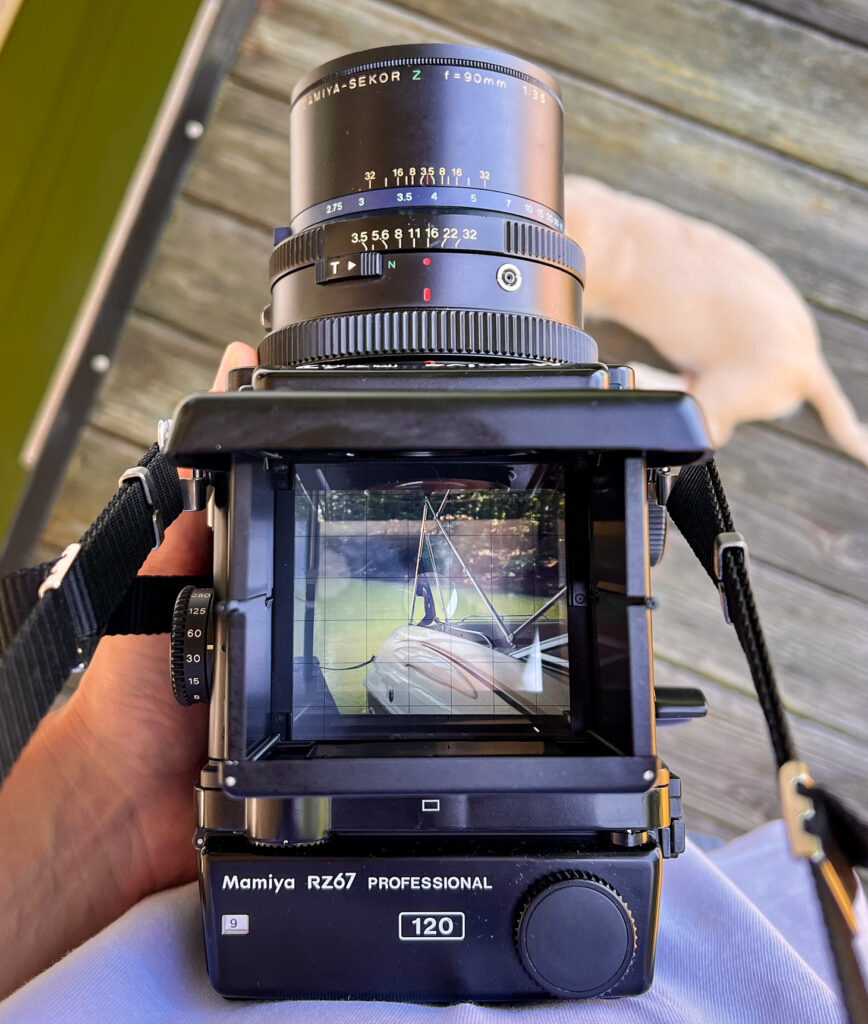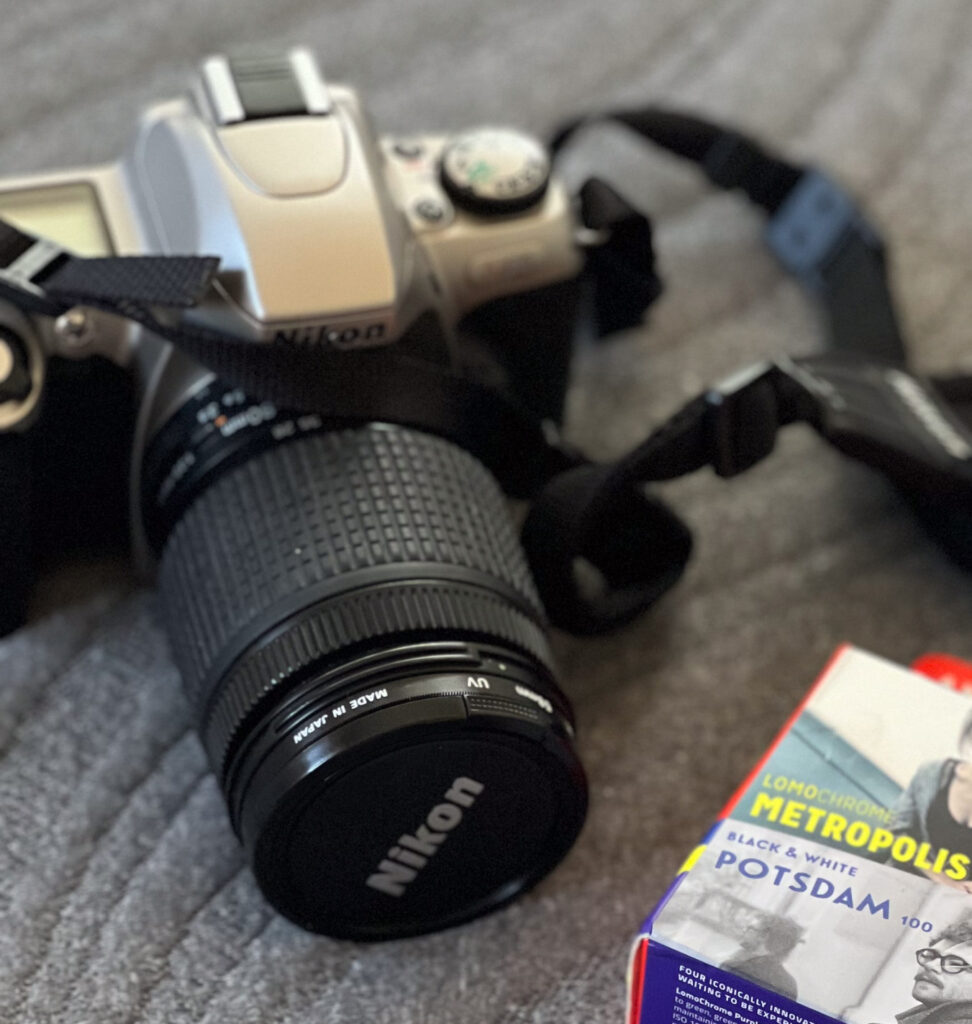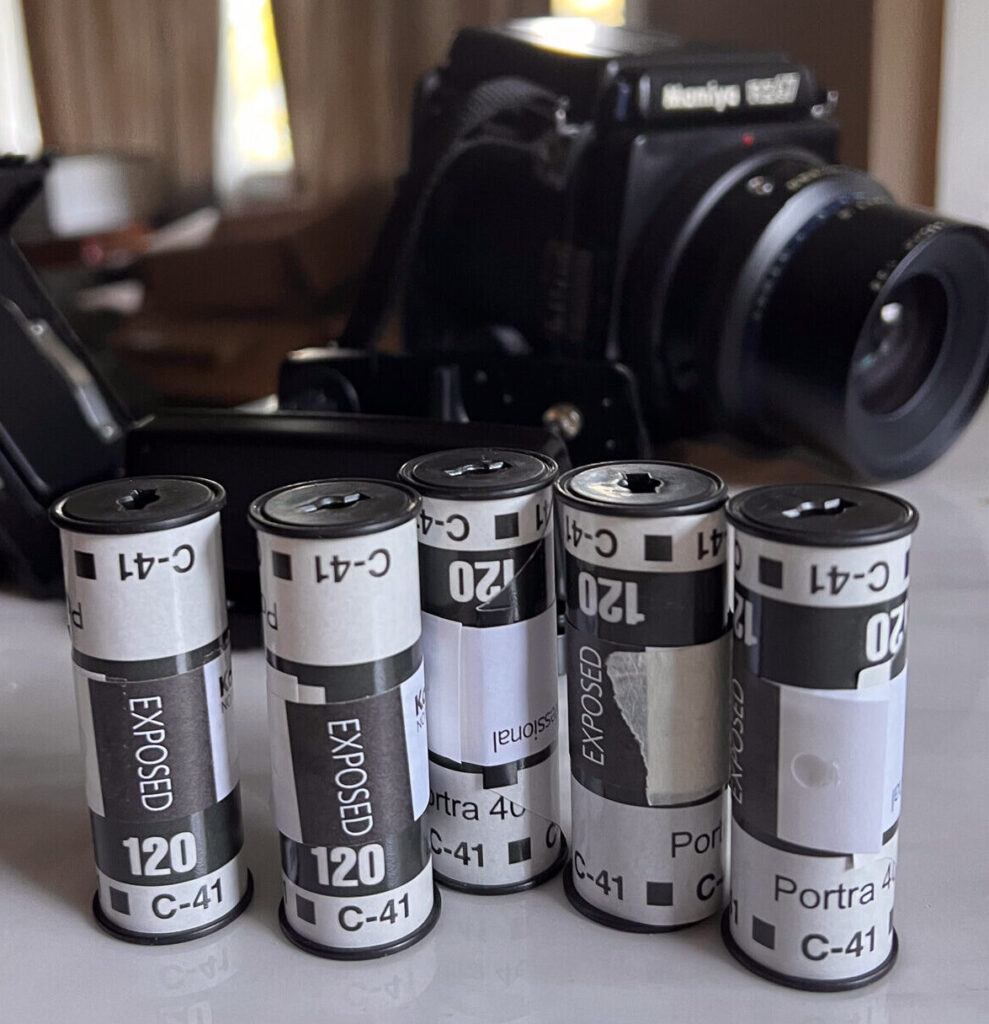Hey there, shutterbugs!
I’m excited to share my latest adventures in the world of film photography with you. For years, I’ve been a dedicated Sony Alpha A7riii user, reveling in the convenience of automatic settings and instant digital feedback. But recently, I leaped medium format film photography with the incredible Mamiya RZ67. Today, I’m excited to share my experiences, tips, and tricks for those of you who are considering or just starting to explore the world of fully manual film photography.
The Transition: From Digital Ease to Manual Mastery
Shifting from a digital mirrorless camera to a fully manual medium format film camera like the Mamiya RZ67 is like moving from an automatic car to a vintage manual transmission. For years, I relied on my trusty Sony Alpha A7riii with its automatic settings and quick-fire capabilities. Then I shifted gears and started shooting with film cameras. Stepping up to the Mamiya RZ67 was a real game-changer. Every aspect of my shots, from focus and exposure to aperture and shutter speed, was a learning curve

My Film Training Wheels: The Nikon N65
My initial exploration into film was supported by the Nikon N65, a camera I inherited from my grandfather. Its user-friendly design offered a gentle introduction to analog film photography. The automatic exposure modes, built-in flash, and the ability to create multiple exposures provided a reliable platform for learning and experimentation. I still use it often, especially for light metering or fast-paced shooting scenarios.

Learning Through 10 Rolls of Film
In the past couple months, I’ve shot about 10 rolls of 120 film, and let me tell you, not every shot was a winner. But each “mistake” has been a lesson, teaching me to slow down, think critically, and truly understand the photographic process. Overexposed frames, underexposed frames, missed focus – they all taught me something new about how to wield this powerful medium.

The Mamiya RZ67: Medium Format Film Magic
The Mamiya RZ67 offers an unparalleled medium format film experience. One of the most rewarding aspects of shooting with the Mamiya RZ67 is the tangible connection to the photographic process. The deliberate pace encourages careful composition and thoughtful planning. Also, working with medium format film is a whole different ball game. The larger negative size of the Mamiya RZ67 allows for incredible detail and a unique depth of field. The resulting images have a breathtaking quality that’s hard to replicate with digital. I still have a long way to go on this journey, but see below for some sample photos from my first few months with the camera.
A couple things to note:
- I used several different kinds of film, i.e. B&W, color, varying ISOs, and a roll of Kodak Portra Gold.
- I had some issues with light leaks as I was learning to load the film in the camera, so several of these photos may have white spots on them.
- I am currently learning how to develop my own film at home, so there may be some dust particles on the photos.
Sample Photos
Main Differences Between My Digital and Film Camera Experiences:
Whether you consider them benefits or downsides, there are definitely key factors that differentiate digital and film cameras:
Different Kinds of Creative Control:
Sony Alpha A7R III: While the A7R III offers manual control, it also has advanced automatic features that allow for quick adjustments in various shooting scenarios. The electronic viewfinder (EVF) provides a real-time preview of exposure and white balance, aiding in precise composition and exposure.
Mamiya RZ67: The RZ67 is entirely manual, requiring you to set the aperture, shutter speed, and focus for every shot. This hands-on approach gives you complete creative control but demands careful consideration before pressing the shutter button.
Capturing the “Perfect” Shot:
Sony Alpha A7R III: The A7R III offers the convenience of digital photography, enabling immediate review and adjustments. You can shoot hundreds of photos on a single memory card, making it suitable for fast-paced shoots and experimentation.
Mamiya RZ67: Shooting on film with the RZ67 is a more deliberate process. Each shot is precious, as you have a limited number of exposures on a roll of film. This encourages a thoughtful approach to composition and settings.
Size and Portability:
Sony Alpha A7R III: The A7R III is compact and lightweight for a full-frame camera, making it ideal for travel and on-the-go photography. It’s also more inconspicuous for street photography.
Mamiya RZ67: The RZ67 is significantly larger and heavier, with multiple components (body, lens, film back, etc.). It’s less portable and better suited for controlled studio or landscape environments.
Cost Considerations:
Sony Alpha A7R III: Once you have the necessary camera and lenses, the ongoing cost is minimal and is primarily limited to batteries and memory cards. Post-processing software may require a subscription fee.
Mamiya RZ67: Film, developing, and scanning can add up over time. The initial investment in the camera and lenses is higher, and you’ll need to consider the cost of film and processing for each shot.
Workflow and Speed:
Sony Alpha A7R III: The A7R III offers a fast and efficient workflow, from capturing to post-processing. You can shoot bursts of images in rapid succession, which is beneficial for events and action photography.
Mamiya RZ67: The film workflow is slower and more methodical. You must load film, manually advance frames, and wait for film development and scanning. This slower pace encourages a more contemplative approach.
The Frustrating Parts About Learning to Shoot Fully Manual
Patience is Key
Getting used to the manual controls took practice. There were times when I missed a shot due to the slower setup or when I misjudged the exposure. Unlike the instant gratification of digital photography, shooting on film requires careful consideration of each shot. But with every hiccup, I grew more confident in my abilities.
Mastery Takes Time
Mastering manual controls, such as adjusting aperture, shutter speed, and focus on the Mamiya RZ67, can be daunting at first. It’s essential to embrace the learning process and take each “failed” shot as an opportunity to grow.

Tips and Tricks for Mamiya RZ67 Beginners
Embrace the Size and Weight
The Mamiya RZ67 is a robust and hefty camera. Embrace its size and weight—it’s a part of the experience. Use a sturdy tripod for stability and support.
Master Your Basics
Understand the fundamentals of exposure, focus, and composition for film cameras. This forms the foundation of great shots.
Embrace Patience & Prepare for the Learning Curve
Shooting on film is a slower process, but it encourages thoughtful photography. Take your time to set up each shot. If you’re new to manual film cameras, be ready for a learning curve. Invest time in understanding the camera’s functions, practice loading film, and familiarize yourself with light metering techniques.
The Magnificent Medium Format
Medium format film yields exceptional image quality and stunning detail. Savor the process of composing and capturing each shot, as the results are well worth the effort.
Metering Matters
Learn about exposure and light metering, and consider a handheld light meter or light metering apps for precise readings. The “sunny 16” rule is a must-know basic skill for guestimating light metering on-the-go.I also sometimes carry around a camera with automatic light metering capabilities and apply those settings to my Mamiya. Regardless of what light metering method you use, it is your best friend when it comes to nailing exposure.
Mind Your Film Speed
Different films have different ISO ratings. Outdoors, studio, indoors, and night will all benefit from different ISO speeds. Choose one that suits your shooting conditions and adjust your settings accordingly.
Perfecting Your Craft
Shooting film forces you to think critically about every aspect of photography. From composition to exposure, you’ll become a more deliberate and skilled photographer over time.
Utilize Post-Production Editing Tools
Every photographer has their own opinions and goals for manual photography. Regardless, post-production editing tools like Adobe Lightroom are excellent for fine-tuning exposure and color errors and unleashing a photo’s full potential.
Helpful Resources for Mamiya RZ67/RB67 Beginners
In Conclusion
My journey into manual film photography with the Mamiya RZ67 has been challenging and immensely rewarding. Despite the transition from the comforts of automatic settings, the creative possibilities of film have made this adventure worthwhile!
So, my fellow shutterbugs. If you’re thinking about adding a film camera to your toolbelt for the first time, or just looking to hone your photography skills with a Mamiya RZ67, I wholeheartedly encourage you to do so!
Stay tuned for more updates on my ongoing adventures in the world of photography, and until next time, keep clicking and keep exploring!




Mostbet Sverige
– mångsidiga spelalternativ .
Mostbet UZ – bu ajoyib imkoniyatlar taklif qiladi , bunda siz
kazino o’yinlari imkoniyatiga ega bo’lasiz.
Ro’yxatdan o’ting va birinchi depozit uchun maxsus takliflar
dan foydalaning. Mostbet kirish
Mostbet Casino – alegere excelentă pentru câștiguri reale
tuturor pasionaților. Mostbet Casino – Cruz
–
Bejelentkezés a Mostbet [Augusta]
Mostbet зеркало – удобный
доступ для игры в казино . mostbet вход